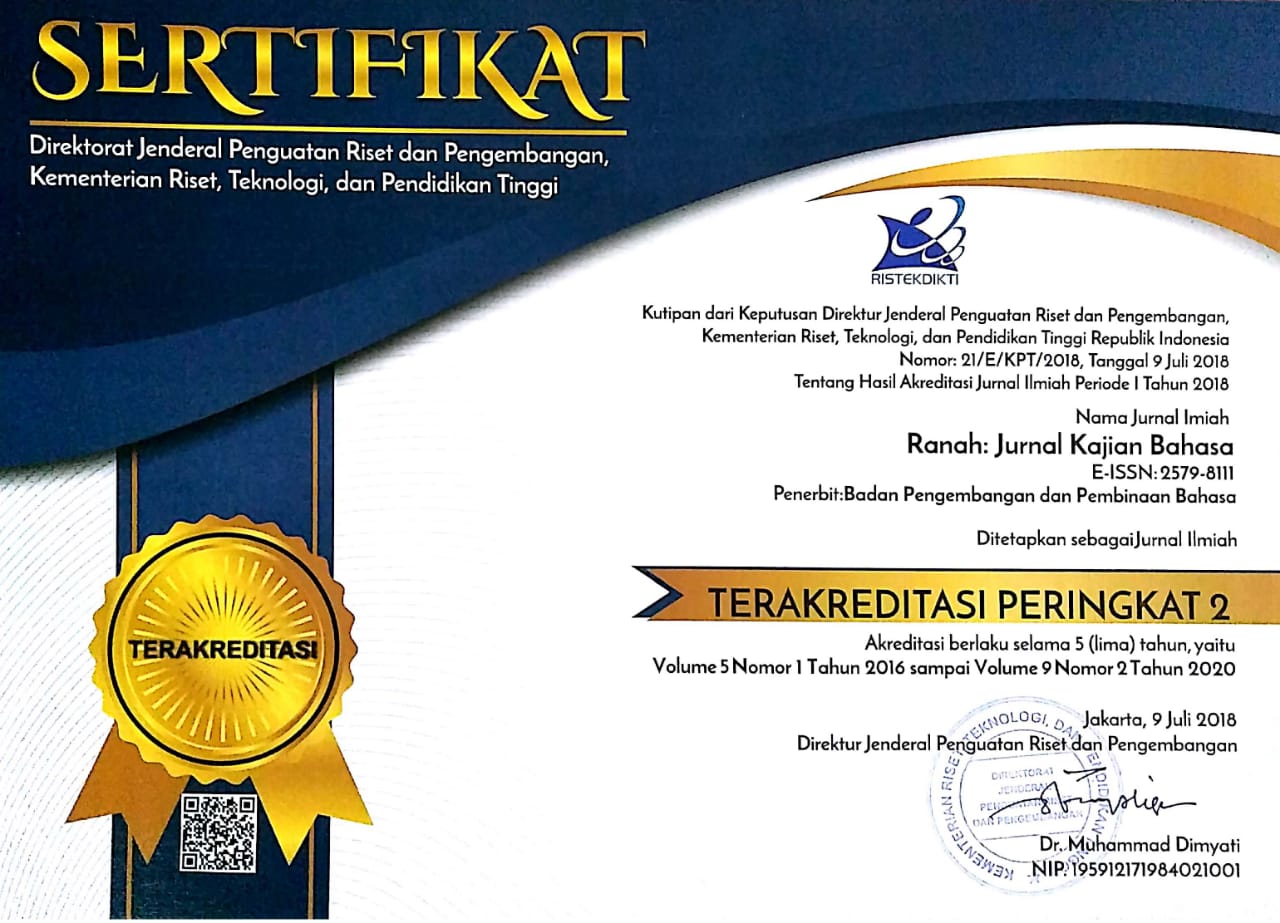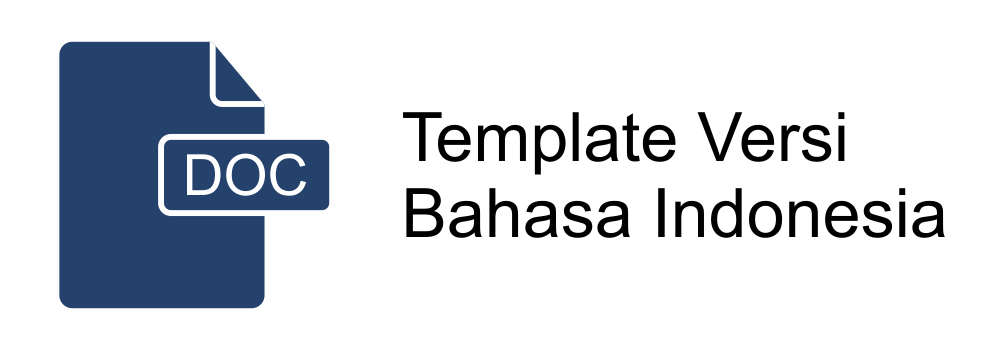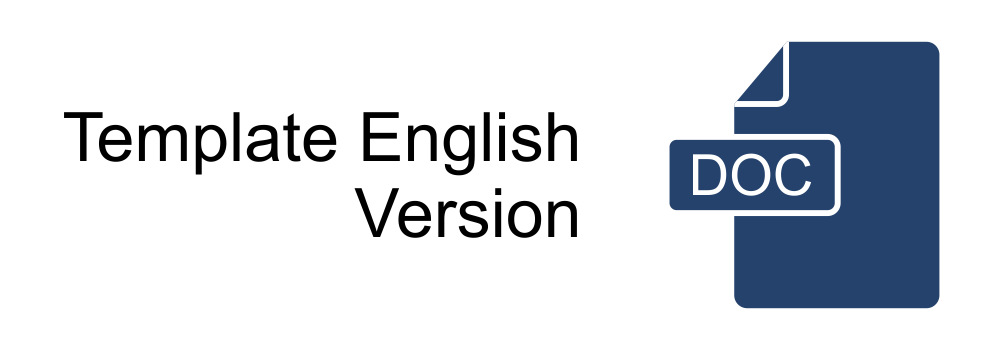Manifestasi Variasi Pola Retorika dan Fungsi Bahasa dalam Bingkai Komunikasi Politik: Studi Kasus Praktik Retorika Anggota DPD RI
Abstract
This study aims to capture the variations in rhetorical patterns and language functions in the context of political communication of the members of the Regional Representative Council of the Republic of Indonesia (Dewan Perwakilan Daerah Republik Indonesia/DPD RI) for the 2019-2024 period and the implications of this rhetoric for public policy in Indonesia. DPD RI members hold a unique position as they are not party representatives but regional representatives at the national level. This makes rhetorical skills crucial for effectively conveying community and regional aspirations. This study adopts a qualitative approach with analytical descriptive methods, using transcriptions of Committee III of DPD RI meetings with the Minister of Women Empowerment and Child Protection of Indonesia (2019-2024). Data analysis involves identification, reduction, analysis, and interpretation. Results reveal that the rhetorical construction employed by DPD RI members encompasses six distinct patterns: (1) Ethos-Pathos-Logos (E-P-L); (2) Pathos-Logos-Ethos (P-L-E); (3) Logos-Pathos-Ethos (L-P-E); (4) Ethos-Logos-Pathos (E-L-P); (5) Logos-Ethos-Pathos (L-E-P); and (6) Pathos-Ethos-Logos (P-E-L). This study also identified three types of language functions in the rhetoric of DPD RI Members: (1) expressive language functions, such as expressions of greetings and salutations, gratitude, concern, appreciation, and willingness; (2) directive language functions with five categories (interrogative, hope, recommendation, instruction, and request); and (3) poetic language functions in the form of rhymes. The implications of DPD RI Members' rhetoric on public policy and political communication in Indonesia are significant because they can create synergy between DPD RI as a legislative institution and related ministries as representatives of the government in the executive institution. This synergy supports the birth of more effective, responsive, and targeted public policies in handling regional issues through central government policies.
Abstrak
Penelitian ini bertujuan untuk memotret variasi pola retorika dan fungsi bahasa dalam konteks komunikasi politik Anggota Dewan Perwakilan Daerah Republik Indonesia (DPD RI) Periode 2019-2024 serta implikasi retorika tersebut terhadap kebijakan publik di Indonesia. Di ranah politik, kemahiran retorika Anggota DPD RI sebagai anggota legislatif dinilai memiliki daya tarik tersendiri karena karakteristiknya yang bukan perwakilan suatu partai, melainkan perwakilan daerah di tingkat nasional. Oleh karena itu, kemahiran retorika menjadi kompetensi penting yang harus dimiliki oleh Anggota DPD RI agar mampu menyuarakan aspirasi masyarakat dan daerahnya secara efektif. Penelitian ini menggunakan pendekatan kualitatif dengan metode deskriptif analitis. Sumber data penelitiannya adalah transkripsi rekaman rapat kerja Komite III DPD RI bersama Menteri PPPA RI. Teknik pengumpulan data dilakukan dengan studi dokumentasi terhadap transkripsi rekaman rapat tersebut. Teknik analisis data dimulai dengan mengidentifikasi data, mereduksi data, menganalisis data, serta menginterpretasikan data. Hasil penelitian menunjukkan bahwa retorika Anggota DPD RI tersebut terdiri atas enam variasi pola seperti berikut: (1) Ethos-Pathos-Logos (E-P-L); (2) Pathos-Logos-Ethos (P-L-E); (3) Logos-Pathos-Ethos (L-P-E); (4) Ethos- Logos-Pathos (E-L-P); (5) Logos-Ethos-Pathos (L-E-P); dan (6) Pathos-Ethos-Logos (P-E-L). Penelitian ini juga mengidentifikasi tiga jenis fungsi bahasa dalam retorika Anggota DPD RI: (1) fungsi bahasa ekspresif, seperti ungkapan salam dan sapaan, terima kasih, keprihatinan, apresiasi, dan kesediaan; (2) fungsi bahasa direktif dengan lima kategori (interogatif, harapan, rekomendasi, instruksi, dan permintaan); dan (3) fungsi bahasa puitis berupa pantun. Implikasi retorika Anggota DPD RI terhadap kebijakan publik dan komunikasi politik di Indonesia sangat signifikan karena dapat menciptakan sinergi antara DPD RI sebagai lembaga legislatif dan kementerian terkait sebagai perwakilan pemerintah di lembaga eksekutif. Kesinergisan ini mendukung lahirnya kebijakan publik yang lebih efektif, responsif, dan tepat sasaran dalam menangani isu-isu daerah melalui kebijakan pemerintah pusat.
Keywords
Full Text:
PDFReferences
Aisyah, M. (2022). Ethos, Pathos, Logos and Public Communication: A Systematic Literature Review. Jurnal Darma Agung, 30(3), 442. https://doi.org/10.46930/ojsuda.v30i3.2066
Alwasilah, A. C. (2014). Filsafat Bahasa dan Pendidikan [Philosophy of Language and Education]. PT Remaja Rosdakarya.
Aristoteles. (2018). Retorika: Seni Berbicara [Rhetoric: The Art of Speaking]; Trans. by Dedeh Sry Handayani. Basa-basi.
Aristoteles. (2021). The Art of Rhetoric by Aristotle: Retorika Aristoteles; Trans. by Andre Hardjana. Abhiseka Dipantara.
Arrianie, L. (2022). Komunikasi Politik: Teori, Model, Perspektif, dan Media [Political Communication: Theories, Models, Perspectives, and Media]. PT Kompas Media Nusantara.
Arwan, & Romli, S. (2019). Retorika Dasar Pandai Bicara [Basic Rhetoric of Clever Talking]. PT Rajagrafindo Persada.
Dhia, R. N., Pramesthi, J. A., & Irwansyah. (2021). Analisis Retorika Aristoteles Pada Kajian Ilmiah Media Sosial Dalam Mempersuasi Publik [Analysis of Aristotle’s Rhetoric in the Scientific Study of Social Media in Persuading the Public]. Linimasa: Jurnal Ilmu Komunikasi, 4(1), 81–103. https://doi.org/https://doi.org/10.23969/linimasa.v4i1.3530
Fahrudin, A., Bajuri, D., & Billah, S. A. (2022). Analisis Retorika Pidato Presiden Jokowi di Ibu Kota Nusantara (IKN) pada Kanal Youtube Official iNews [Rhetorical Analysis of President Jokowi’s Speech in the Archipelago Capital (IKN) on the Official iNews YouTube Channel]. JIKA (Jurnal Ilmu Komunikasi Andalan), 5(2), 200–215. https://ejournal.unma.ac.id/index.php/jika/article/view/4493/2509
Habermas, J. (1984). The Theory of Communicative Action; Trans. by Thomas McCarthy. Heinemann.
Hendri, E. (2019). Komunikasi Persuasif: Pendekatan dan Strategi [Persuasive Communication: Approaches and Strategies]. PT Remaja Rosdakarya.
Holmes, J. (2001). An Introduction to Sociolinguistics (2nd ed.). Longman.
Keraf, G. (2006). Komposisi [Composition]. Ikrar Mandiri Abadi.
King, L., & Gilbert, B. (2020). Seni Berbicara kepada Siapa Saja, Kapan Saja, di Mana Saja (Trans. by Marcus Prihminto Widodo) [The Art of Talking to Anyone, Anytime, Anywhere]. PT Gramedia Pustaka Utama.
Maarif, Z. (2019). Retorika: Metode Komunikasi Publik [Rhetoric: Methods of Public Communication]. PT Rajagrafindo Persada.
Mardiyansyah, D. (2014). Kampanye yang Menghipnosis Audiens: Cara Dahsyat Memengaruhi Calon Pemilih dengan Komunikasi Pikiran Bawah Sadar & Pola Bahasa Hipnosis [Campaigns that Hypnotize Audiences: Powerful Ways to Influence Potential Voters with Subconscious Mind Communication & Hypnotic Language Patterns]. SaLaris Publisher.
Moleong, L. J. (2022). Metodologi Penelitian Kualitatif [Qualitative Research Methodology]. PT Remaja Rosdakarya.
Mulyana, D. (2014). Komunikasi Politik: Membedah Visi dan Gaya Komunikasi Praktisi Politik [Political Communication: Dissecting the Vision and Communication Style of Political Practitioners]. PT Remaja Rosdakarya.
Mulyana, D. (2023). Ilmu Komunikasi: Suatu Pengantar [Communication Science: An Introduction]. PT Remaja Rosdakarya.
Nusantari, A.P. & Rokhman, F. (2016). Kode Tutur Verbal Penutur Asing dalam Ranah Sosial Masyarakat Dwibahasawan [Verbal Speech Codes of Foreign Speakers in the Social Realm of Bilingual Societies]. Seloka: Jurnal Pendidikan Bahasa dan Sastra Indonesia., (5)1, 62-70. https://doi.org/10.15294/seloka.v5i1.12752
Palmer, G. B. (1999). Towards a Theory of Cultural Linguistics. University of Texas Press.
Priatna, A. N. (2022). Wacana Politik Pada Pidato Anggota Parlemen Indonesia Tentang Penanganan COVID-19 [Political Discourse in the Speeches of Members of the Indonesian Parliament Regarding Handling COVID-19]. Bureaucracy Journal : Indonesia Journal of Law and Social-Political Governance, 2(2), 806–832. https://doi.org/10.53363/bureau.v2i2.112
Rakhmat, J. (2021). Retorika Modern: Pendekatan Praktis Berbicara di Depan Publik [Retorika Modern: Pendekatan Praktis Berbicara di Depan Publik]. Simbiosa Rekatama Media.
Saptomo, S. W. (2001). Makian dalam Bahasa Jawa [Javanese Swearing] [Thesis]. Universitas Gadjah Mada.
Suparno, B. A. (2010). Kontestasi Makna dan Dramatisme Komunikasi Politik tentang Reformasi di Indonesia [Contestation of the Meaning and Dramatism of Political Communication about Reform in Indonesia]. Jurnal Ilmu Komunikasi, 8(1), 1–12. https://doi.org/https://doi.org/10.31315/jik.v8i1.64
Syahri, A. (2017). Konstruksi Retorika Politik Anggota DPD Provinsi Sumatera Utara Drs. Rijal Sirait pada Pemilu DPD Tahun 2014 [Political Rhetoric Construction of North Sumatra Province DPD Member Drs. Rijal Sirait in the 2014 DPD Elections]. Jurnal Interaksi: Jurnal Ilmu Komunikasi, 1(1), 72–92. https://doi.org/https://doi.org/10.30596/interaksi.v1i1.880
West, R., & Turner, L. H. (2010). Introducing Communication Theory: Analysis and Application.
Widayati. (2015). Sistem Parlemen Berdasarkan Konstitusi Indonesia [Parliamentary System Based on the Indonesian Constitution]. Masalah-Masalah Hukum, 44(4), 415. https://doi.org/10.14710/mmh.44.4.2015.415-424
Wijana, I. D. P. (2018). Aneka Fungsi Bahasa Syair-Syair Lagu Ismail Marzuki [Various Language Functions of Ismail Marzuki’s Song Poems]. Deskripsi Bahasa, 1(2), 81–90. https://doi.org/10.22146/db.v1i2.326
Yusuf, M. (2013). Dewan Perwakilan Daerah Republik Indonesia: Arsitektur Histori, Peran dan Fungsi DPD RI terhadap Daerah di Era Otonomi Daerah [Regional Representative Council of the Republic of Indonesia: Historical Architecture, Role and Function of the DPD RI towards the Regions in the Era of Regional Autonomy]. Graha Ilmu.
DOI: https://doi.org/10.26499/rnh.v13i2.7095








